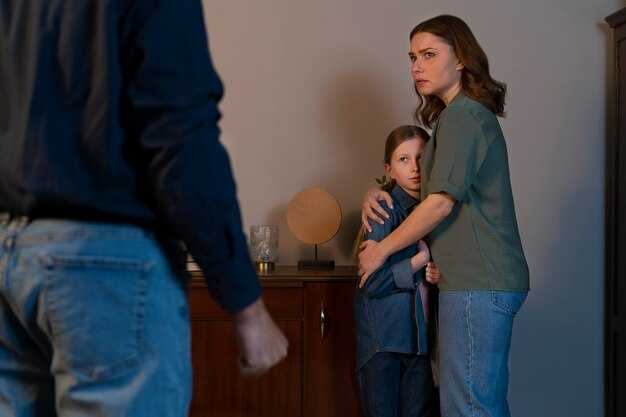Why isn’t saying “I forgive you” enough to simply move forward? People often tell themselves that the past is behind them and that forgiveness should erase the pain, but when you stand in the presence of the person who hurt you, the old hurt can still flare up and you may feel distant and unsafe. That happens because forgiveness on its own does not magically restore closeness, safety, or trust. This is not an argument against forgiveness — it is crucial for healthy relationships and far too rarely discussed. No one tells newlyweds that they will inevitably wound each other in various ways and will need to become practiced at taking responsibility, apologizing, and offering and receiving forgiveness. That said, acknowledging forgiveness does not excuse major betrayals; what it does mean is recognizing that a wrong occurred. People owe apologies because harm creates a debt — a wound that should be acknowledged rather than swept away. You can choose to release resentment and mentally cancel the debt because often the other person can’t truly repay you, but releasing resentment is not the same as re-establishing intimacy. Forgiveness alone does not rebuild trust or repair fractured connection; it does not heal the injury. You can forgive someone, yet still feel unsafe around them because your body is attuned to danger. If the person who hurt you continues to act in ways that are untrustworthy, your instinct will resist giving them more of your time, attention, or emotional energy. It would be unwise for your body to reward someone who has repeatedly taken advantage of it. You cannot trick your nervous system into feeling safe with someone who remains unsafe. If a person shows no curiosity about your pain, refuses to validate how their words or actions impacted you, and declines to take responsibility or change, then even if you forgive them, closeness will remain elusive. That does not mean reconciliation is impossible after harm — it is possible — but only when both people commit to repair. True repair calls for not only one-sided forgiveness but also the other person’s accountability, genuine validation of past wounds, and consistent behavioral change. Intimacy, connection, and trust require more than a single act of pardon. This is why people sometimes end contact with toxic or narcissistic parents despite having forgiven them; it’s rarely a preferred choice, but often the only viable one to protect peace of mind. They come to understand that they shouldn’t have to sacrifice themselves to be near someone who mistreats, disrespects, or neglects them. Even after forgiveness, if the person refuses to own their actions, shows no remorse, and makes no effort to change, closeness will never feel possible. Choosing distance in that case isn’t being unreasonable; it’s an assertion of what one rightfully deserves — healthy boundaries and reciprocal respect. Often the people who complain about those boundaries are the very ones who benefited most when boundaries did not exist. Forgiving someone does not obligate you to restore access to your life, nor does it require you to continue exposing yourself to harm. Forgiveness can be offered privately; it demands nothing from the person who hurt you. In contrast, rebuilding safety and connection requires mutual labor. So beware the convenient belief that forgiveness alone will make everything alright. Depending on the severity of the betrayal, not forgiving and not moving on may be the safer choice — and in some cases, forgiving without meaningful change from the other person is actually more harmful because it sets you up to be hurt in the same ways again. If the person keeps failing to change, eventually you’ll realize the only way to stop being hurt is to exit the situation entirely. A toxic individual may blame you for asserting healthy limits; a narcissist may accuse you of abandoning them when you step away. They will often twist forgiveness into a weapon, claiming that “love forgives” while conveniently omitting that love also takes responsibility, asks how one’s actions affect others, and requires mutual sacrifice and respect. Forgiveness is preferable to resentment, bitterness, or holding grudges — those states poison your body and mind. Letting go of that corrosive energy is a powerful reason to forgive. But releasing bitterness does not automatically mean the person is welcome back into your life. It’s up to you to judge whether their behavior — shown through consistent action, not mere promises — merits restored access. All of this is difficult; losing someone you love is painful, and no one wants that. Yet if someone truly loved you, they would not continually hurt you and then refuse to make amends. Some wounds are too deep to be repaired, and that’s okay. You can forgive and still decide that the damage is too great or that you are not willing to do the emotional work required to heal it. There is no guilt required in that choice. The main point here is to remember that forgiveness does not erase consequences. Distrust, disconnection, pain, and the sense of not feeling safe around someone are natural outcomes of betrayal. Different kinds of betrayals call for different types of responses, but forgiveness is rarely the first step toward healing. The initial move should be honest acknowledgment — the person who caused harm must be willing to confront and name what they did. From there, repair requires active participation: the person who hurt you must do the work on their end. Even when they are doing that work, you won’t necessarily feel reconnected overnight; your body is wise and cautious. Be careful, too, about lingering in a relationship where the other person is genuinely trying to make amends yet you continually use the past against them in every argument — weaponizing it is unfair and stalls growth. You are under no obligation to forgive or to remain with those who have hurt you, but it is also unjust to stay and refuse to forgive while repeatedly weaponizing the past. For those who are undertaking the work to repair ruptures, recognize that rebuilding trust is a gradual, long-term commitment. Trust grows slowly and can collapse in an instant, so be prepared for a drawn-out process. How long it takes depends on the scale of the betrayal — it might take months or years, and that is normal. If you are attempting to repair a relationship, professional help can make a big difference. When someone reveals they still feel triggered by a place, a smell, or a memory, respond with compassion and curiosity. Validating their feelings and asking what they need to feel supported in that moment — rather than telling them they should be “over it” — is how trust and safety are rebuilt over time. Dismissing their pain only widens the gap. The hope is that everyone will do the work required to cultivate trust, safety, and intimacy, because everyone deserves a relationship that reflects that care. Thank you for listening — may you both find and build the kind of relationship you deserve.
Practical steps to move from forgiveness toward repair
- Start with naming the harm. A clear, specific acknowledgement from the person who hurt you (not vague apologies) helps your nervous system make sense of what happened.
- Ask for—and look for—concrete actions. Promises mean little without measurable change (e.g., attend therapy, change a behavior pattern, stop certain actions, or agree to new boundaries).
- Set short-term experiments. Rebuild trust in small, testable ways (shared tasks, time-limited contact, or keeping to simple agreements) before re-entering full intimacy.
- Agree on accountability and timelines. Discuss what accountability looks like, how you will check progress, and what will happen if change stalls or reverses.
- Use “I” statements and curiosity. Both parties should practice describing impact (“I felt X when you did Y”) and asking open questions rather than assuming motives.
What genuine accountability looks like
- Taking clear responsibility without shifting blame, minimizing, or qualifying the harm.
- Expressing remorse that communicates you understand the impact, not just regret for getting caught or causing inconvenience.
- Making reparative gestures tailored to the harm (not generic gifts) and being willing to listen when those gestures fall short.
- Following through consistently over time; repairing trust is demonstrated by repetition, not one-off performances.
- Welcoming healthy consequences or boundary-setting instead of resenting them.
Boundary-setting and enforcing them
Boundaries are both a protection and a communication. When you set limits, be direct about what you need, what behaviors are unacceptable, and the consequences of continued harm. Enforce boundaries calmly and consistently. If a person tests them, remind them of the agreement; if they persist, follow the consequence. Boundaries are not punishments — they are safety measures that allow relationships to continue only under respectful terms.
When to seek outside help or consider leaving

- Seek couples or individual therapy when patterns repeat and both parties are willing to work. A skilled clinician can help with repair strategies, communication skills, and safety planning.
- If abuse (emotional, physical, sexual, financial) is present, prioritize safety. Create a safety plan, contact trusted supports, and consider specialized domestic-violence resources.
- Recognize red flags for persistent harm: refusal to accept responsibility, stonewalling, manipulation, gaslighting, or patterns of abusive escalation. When these continue, leaving may be the healthiest option.
How to support someone who is healing
- Validate their experience. Saying “I hear that you’re still hurt” is more helpful than insisting they “move on.”
- Ask what they need now. Needs change—sometimes it’s space, sometimes it’s reassurance, sometimes practical help.
- Be consistent in small behaviors: punctuality, keeping promises, predictable emotional availability. Consistency rebuilds safety.
- Accept that triggers are normal. When a partner or friend is triggered, respond with calm curiosity rather than defensiveness.
Self-care and realistic expectations

Repair takes time and may not follow a linear path. Honor your own limits and practice self-care: rest, therapy, supportive friends, and activities that reinforce your sense of worth. Allow yourself to grieve losses even as you forgive—forgiveness and grief can coexist. Finally, remember that forgiveness is for your peace of mind, while repair is earned and conditional. Both are valid parts of choosing how you want to live and love.


 Forgiveness won’t save a Relationship">
Forgiveness won’t save a Relationship">

 Êtes-vous COUPABLE de cette double norme relationnelle ?">
Êtes-vous COUPABLE de cette double norme relationnelle ?">
 Pourquoi votre partenaire évitant vous ignore et comment j'ai arrêté de le faire.">
Pourquoi votre partenaire évitant vous ignore et comment j'ai arrêté de le faire.">
 How to Keep Narcissistic Parents From Controlling Your Life">
How to Keep Narcissistic Parents From Controlling Your Life">
 Your Body Is Warning You! — The REAL Reason You’re So Overwhelmed">
Your Body Is Warning You! — The REAL Reason You’re So Overwhelmed">
 A Culture of Appreciation is Essential in your Relationships">
A Culture of Appreciation is Essential in your Relationships">
 When Dismissive Avoidants Grow Older… Midlife Crisis Incoming | Avoidant Attachment Style">
When Dismissive Avoidants Grow Older… Midlife Crisis Incoming | Avoidant Attachment Style">
 Breaking up: When to give them another chance.">
Breaking up: When to give them another chance.">
 How to Identify and Escape "Spiritual" Manipulation">
How to Identify and Escape "Spiritual" Manipulation">
 What To Do When You Can’t Let Go of The One You Love (4-Video Compilation)">
What To Do When You Can’t Let Go of The One You Love (4-Video Compilation)">
 Why Personal Development Fails Women With Trauma">
Why Personal Development Fails Women With Trauma">